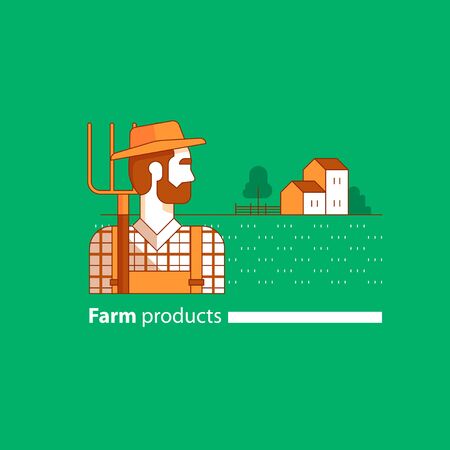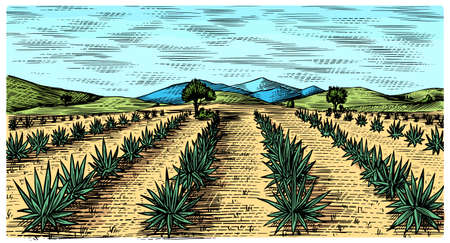Introduction to Cow Dung Manure in Indian Agriculture
Cow dung manure, known locally as “gobar,” holds a profound and time-honoured place in Indian agriculture. For generations, rural households across India have relied on cow dung not just as a natural fertilizer but also as an essential part of their daily lives, embodying the traditional wisdom of sustainable farming. The use of cow dung is deeply embedded within the Indian rural ethos, where cows are revered and considered symbols of prosperity and fertility. From organic rice fields in West Bengal to wheat farms in Punjab and millet cultivation in Rajasthan, gobar is universally recognised for its ability to enrich the soil naturally. In recent years, scientific attention has turned towards understanding the actual benefits and mechanisms through which cow dung improves soil health. This renewed interest bridges the gap between age-old practices and modern agricultural science, highlighting how indigenous knowledge aligns with contemporary goals for sustainability and regenerative agriculture. Today, both small-scale farmers and agricultural researchers are exploring how cow dung manure can restore soil vitality, enhance microbial diversity, and improve crop yields while reducing dependence on chemical fertilizers. Thus, the story of cow dung manure in India is not merely about tradition—it is a living example of nature-based solutions that are gaining fresh relevance amid global calls for eco-friendly farming practices.
Scientific Properties and Nutrient Composition
Cow dung, locally known as “gobar,” is more than just traditional farmyard manure in India. Its unique physical, chemical, and biological properties have been validated by modern scientific research, making it a vital element for sustainable soil management across Indian farmlands. The physical texture of cow dung helps in improving soil structure by increasing water retention capacity and aeration, essential for the diverse climatic conditions found throughout the subcontinent.
Chemically, Indian cow dung is rich in macro and micronutrients that are crucial for plant growth. These include nitrogen (N), phosphorus (P), potassium (K), calcium (Ca), magnesium (Mg), and trace minerals such as zinc and copper. The following table highlights the average nutrient composition found in Indian cattle dung according to recent agricultural studies:
| Nutrient | Average Content (%) |
|---|---|
| Nitrogen (N) | 0.4–0.5 |
| Phosphorus (P2O5) | 0.2–0.3 |
| Potassium (K2O) | 0.3–0.5 |
| Calcium (Ca) | 0.6–0.7 |
| Magnesium (Mg) | 0.2–0.3 |
| Zinc (Zn) | 10–50 ppm |
| Copper (Cu) | 5–20 ppm |
Biological Diversity in Cow Dung
The biological richness of cow dung is another key reason for its widespread use in Indian agriculture. Scientific investigations have shown that fresh gobar contains a thriving population of beneficial microbes, including nitrogen-fixing bacteria (Azotobacter), phosphate-solubilizing bacteria, actinomycetes, fungi, and even earthworm eggs which play an important role in vermicomposting processes.
Culturally Significant Microbial Consortia
The microbial diversity within Indian cow dung aligns with traditional practices like Panchagavya preparation and Jeevamrutham application, both of which rely on these indigenous microorganisms to promote natural soil fertility and plant health. Notably, lactic acid bacteria, Bacillus species, and Trichoderma fungi are regularly identified in scientific studies of cow dung from desi cows such as Gir, Sahiwal, and Red Sindhi breeds.
Conclusion on Scientific Value for Soil Health
The holistic nutrient profile and rich microbial ecosystem found in Indian cow dung provide a foundation for improved soil health, increased organic matter content, and enhanced crop productivity without dependency on synthetic inputs—a principle deeply rooted in both scientific understanding and local wisdom.

3. Cultural Practices and Regional Variations
Across the diverse landscape of India, the preparation and application of cow dung manure are deeply influenced by regional traditions, community rituals, and indigenous knowledge. Indian farmers treat the process as more than a routine agricultural practice; it is often regarded as a sacred activity rooted in centuries-old customs. In North India, for example, cow dung cakes, known locally as uplas or kandas, are sun-dried and stored for use in both fields and household purposes. These uplas are sometimes blessed during local festivals such as Makar Sankranti or Lohri, reflecting the spiritual significance attached to cattle and their by-products.
Traditional Preparation Methods
Preparation methods vary widely across states. In Maharashtra and Gujarat, farmers commonly mix fresh cow dung with crop residues and sprinkle water to create compost heaps, following the Nadep or Amrut Mitti methods developed through indigenous experimentation. The composting process is guided by lunar calendars or astrological advice in some communities, emphasizing harmony with natural cycles. In Tamil Nadu and Kerala, farmers may combine cow dung with organic kitchen waste and green leaves, accelerating decomposition through regular turning and moisture management—a practice passed down from elders who have worked the same land for generations.
Rituals and Community Participation
The collective aspect of manure preparation is particularly visible in rural villages during agricultural festivals like Pongal or Baisakhi. During these occasions, families gather to clean cowsheds, collect dung, and prepare manure pits as a community activity. The act is often accompanied by prayers for soil fertility and good harvests, reinforcing the role of tradition in sustainable farming practices. Women frequently lead these rituals, drawing on ancestral wisdom to determine when and how to apply manure for maximum benefit.
Indigenous Knowledge Systems
Indigenous knowledge plays a crucial role in guiding the timing and method of manure application. Farmers rely on observations—such as changes in soil texture, color, or earthworm activity—to decide when fields are ready for enrichment. In Eastern India, the age-old practice of Sanjha Chula involves using partially decomposed cow dung directly in paddy fields before transplantation, while in Rajasthan’s arid zones, cow dung mixed with sand helps retain soil moisture and prevent erosion. These adaptive techniques reflect an intimate understanding of local agro-ecological conditions honed over generations.
4. Impact on Soil Health and Crop Productivity
Scientific Review of Cow Dung Manure Effects
Numerous research studies conducted across various Indian agro-climatic zones have consistently highlighted the profound impact of cow dung manure on soil health and crop productivity. As per findings from institutions like ICAR and various state agricultural universities, cow dung manure not only enriches soil fertility but also enhances the sustainability of farming systems in India.
Improvements in Soil Fertility and Organic Matter
Cow dung manure acts as a slow-release source of essential nutrients such as nitrogen (N), phosphorus (P), and potassium (K), which are vital for healthy crop growth. Its application increases soil organic matter, improving soil structure, water retention capacity, and aeration. This is particularly significant for Indian soils, which often suffer from low organic carbon due to intensive cultivation.
| Soil Parameter | Without Cow Dung Manure | With Cow Dung Manure |
|---|---|---|
| Soil Organic Carbon (%) | 0.32 – 0.41 | 0.47 – 0.61 |
| Total Nitrogen (kg/ha) | 120 – 160 | 180 – 220 |
| Water Holding Capacity (%) | 28 – 34 | 36 – 43 |
Enhancement of Microbial Activity
The addition of cow dung stimulates beneficial soil microbial populations, including bacteria, actinomycetes, and fungi. These microorganisms help in decomposing organic residues and facilitate nutrient cycling, especially in traditional Indian cropping systems like rice-wheat or maize-pulses rotations. Studies from Madhya Pradesh and Punjab have shown a marked increase in microbial biomass carbon and enzymatic activity post-application.
Diverse Agro-Climatic Zone Research Highlights
| Region | Main Crop | Observed Impact of Cow Dung Manure |
|---|---|---|
| Punjab (North-West) | Wheat-Rice | 20% higher yield; improved soil aggregation |
| Maharashtra (Western Deccan) | Soybean-Cotton | Increase in soil moisture retention; reduction in chemical fertilizer use by 30% |
| Tamil Nadu (South) | Paddy-Sugarcane | Enhanced root growth; higher organic matter content |
Sustainable Yield Improvements Across Crops
The application of cow dung manure has resulted in sustainable yield improvements across cereals, pulses, oilseeds, and vegetables in India. For example, field trials at Tamil Nadu Agricultural University reported a 15–22% increase in paddy yields when farmyard manure was combined with reduced doses of chemical fertilizers. Similarly, farmers practicing natural farming methods in Andhra Pradesh observed enhanced resilience to drought and pest attacks.
These findings validate the significance of integrating cow dung manure into modern Indian agriculture for building resilient soils and achieving productive harvests while preserving ecological balance.
5. Sustainability, Climate Resilience, and Ecological Benefits
Empowering Sustainable Agriculture Through Cow Dung Manure
Cow dung manure, or gobar khad as it is known locally, has long been at the heart of India’s sustainable agriculture practices. Scientific studies confirm that cow dung enriches the soil with organic matter and vital nutrients, supporting healthy crop growth without the harmful side effects associated with chemical fertilisers. By using gobar khad, Indian farmers are able to maintain soil fertility for generations, reduce input costs, and promote the natural cycles essential for resilient farming.
Reducing Dependence on Chemical Fertilisers
The overuse of chemical fertilisers in conventional farming has led to soil degradation, water pollution, and loss of biodiversity in many regions across India. Integrating cow dung manure into regular farm routines helps break this dependence by providing a reliable, locally sourced alternative. As a result, farmers can save on expensive external inputs and protect their land from the negative impacts of chemical runoff. This approach aligns with traditional Indian wisdom (paramparik kheti) and supports Atmanirbhar Bharat by encouraging self-reliant farming communities.
Enhancing Climate Resilience in Indian Farming Systems
Cow dung manure plays a key role in building climate resilience. The organic matter improves soil structure, enhances water retention capacity (jal sangrah), and encourages beneficial microbial activity. This makes crops better equipped to withstand droughts and erratic rainfall patterns commonly experienced due to climate change. Moreover, using gobar khad reduces greenhouse gas emissions compared to synthetic fertiliser manufacturing and application, contributing to India’s commitment to environmental stewardship.
Ecological Balance and Long-Term Productivity
By adopting cow dung manure as a core input, Indian farmers help preserve ecological balance. The practice supports pollinators, earthworms (kechua), and other beneficial organisms crucial for healthy agroecosystems. Over time, this leads to improved crop yields, reduced pest outbreaks, and rejuvenated soils capable of sustaining diverse cropping systems such as intercropping (millet with pulses or vegetables) that are common across rural India.
In summary, scientific research validates what Indian farmers have practised for centuries: using cow dung manure not only nurtures the earth but also paves the way for sustainable development, robust climate adaptation strategies, and thriving rural livelihoods rooted in harmony with nature.
6. Challenges, Limitations, and Future Research Directions
Practical Challenges in Adoption
Despite the proven benefits of cow dung manure for soil health, Indian farmers face several practical challenges in mainstreaming its use. One significant issue is the lack of access to sufficient quantities of quality cow dung, especially for small and marginal farmers who do not own livestock. Storage, transportation, and timely application also remain hurdles due to inadequate infrastructure in rural areas. Additionally, the traditional methods of preparing and applying cow dung manure can be labour-intensive and time-consuming, discouraging large-scale adoption.
Socio-Economic Barriers
The socio-economic landscape in India influences the acceptance and promotion of organic inputs like cow dung manure. Many farmers are attracted to chemical fertilizers due to aggressive marketing, immediate visible results, and government subsidies. This has led to a perception that organic options are less effective or less profitable in the short term. Furthermore, the existing policy framework does not always incentivise natural farming practices adequately. Societal attitudes towards manual handling of cow dung—sometimes seen as menial work—also act as a psychological barrier among certain communities.
Limitations in Current Research
While research has highlighted the positive impacts of cow dung manure on soil fertility and crop yield, there is still limited region-specific scientific data available for diverse agro-climatic zones across India. Variability in animal diet, local soil types, and climatic conditions can affect the efficacy of cow dung manure. More rigorous long-term studies are needed to quantify benefits, identify best practices, and address environmental concerns such as methane emissions during decomposition.
Need for Further Scientific Research
To strengthen the case for integrating cow dung manure into mainstream agriculture, interdisciplinary research should focus on optimizing processing methods (like composting or vermicomposting), improving nutrient management strategies, and developing scalable models suitable for different farm sizes. Collaboration between agricultural universities, Krishi Vigyan Kendras (KVKs), and grassroots organizations is vital to generate evidence-based recommendations tailored for Indian conditions.
Farmer Education and Capacity Building
For widespread adoption, comprehensive farmer education programmes are essential. These should include hands-on training sessions on preparation techniques, efficient use, and economic advantages of cow dung manure compared to synthetic alternatives. Extension workers must bridge knowledge gaps by using local languages and culturally relevant demonstrations. Women’s self-help groups (SHGs) and youth clubs can play a pivotal role in promoting natural farming practices at the community level.
Towards a Sustainable Future
Mainstreaming cow dung manure as a soil health enhancer requires an integrated approach addressing both scientific and socio-economic dimensions. By overcoming current challenges through targeted research and inclusive capacity building, India can take significant strides towards sustainable agriculture rooted in its indigenous wisdom and ecological harmony.

